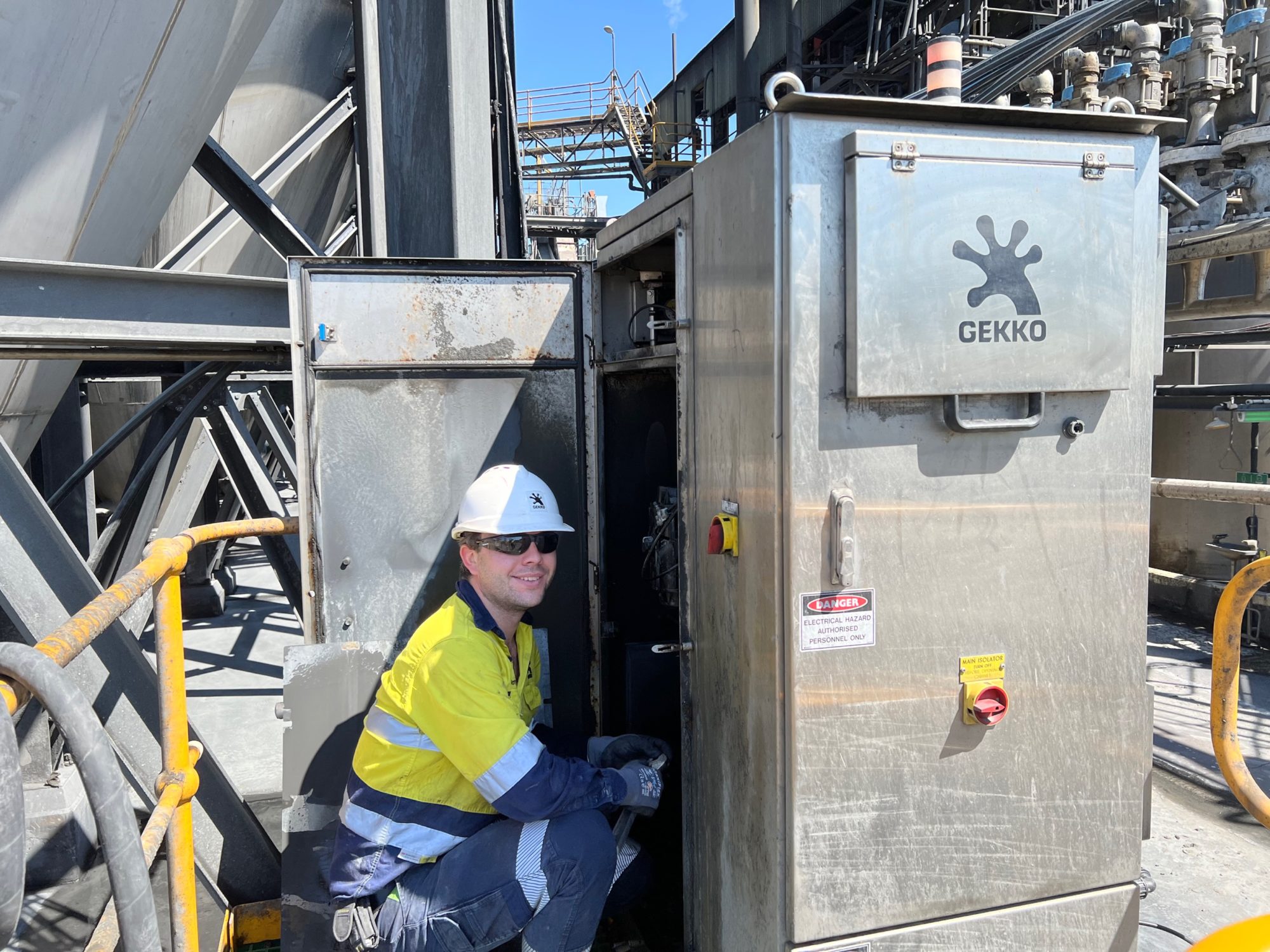The technical team at Gekko Systems has released further data that, it says, supports the benefits of new technology that optimises carbon management systems in gold processing facilities.
Optimising carbon management in the carbon-in-leach (CIL) circuit reduces gold solution losses and improves gold circuit recovery. This is essential for sites needing to offset higher inflationary costs with improved revenue, Gekko says.
The case study, released today, reviews operational performance of Gekko’s Carbon Scout at Evolution’s Cowal Gold Operation in New South Wales, Australia.
The Carbon Scout is a self-contained, ground-level sampling system that measures carbon concentration, as well as pH, DO and, more recently, has an option to measure gold loading on carbon using XRF technology on an hourly basis. Optimising the Carbon Scout for site conditions allows for more accurate, reliable and repeatable measurement of the carbon inventory of the CIL
circuit, Gekko says. Automating data collection and process actions such as carbon transfer, meanwhile, reduces operator risk exposure and person-hours (previously dedicated to the manual data collection tasks).
Installation of the Carbon Scout at Cowal commenced in February 2019, with the Gekko Systems Digital Services and Technical team providing ongoing support – both onsite and remotely – in the initial months of the system’s operation to ensure maximum availability was achieved and Evolution Mining was receiving the full benefit of the Carbon Scout.
After a few months of integration with the SCADA system, the Carbon Scout was able to use the data and analysis to facilitate automated transfer of the carbon inventory within the circuit to maintain pre-determined concentrations, according to Gekko.
The Carbon Scout at Cowal has successfully reduced operator exposure to slurry containing hazardous materials including cyanide and improved sample authenticity by collecting a more representative and repeatable sample, Gekko said in the case study.
The other critical success achieved by the Carbon Scout is its ability to take a larger CIL tank sample that is more representative. This is achieved by the Carbon Scout drawing from deeper within the tank, where more superior slurry-carbon mixing occurs, and a larger sample of up to 20 litres is taken, which is 10-20 times the typical manual sample size. Additionally, the sample is extracted from a consistent point each time the Carbon Scout cycle samples from that tank.
Gekko concluded: “Optimising the Carbon Scout for site conditions allows for more accurate, reliable and repeatable measurement of the carbon inventory of the CIL circuit. Utilising these measurements and integrating with a plant’s SCADA system, the automatic control of carbon concentrations through the CIL circuit can be achieved. Automating data collection and process actions such as carbon transfer reduces operator risk exposure and man hours previously dedicated to the manual data collection tasks.
“The improvement derived from the utilisation of the Carbon Scout should lead to increases in circuit recovery by reducing soluble gold losses.”
The Carbon Scout was originally the brainchild of Curtin University’s Gold Processing team, led by Dr Teresa McGrath and Bill Staunton. Curtin University selected Gekko Systems as its commercialisation partner.
Staunton noted that “real-time data collection instrumentation and related analysis is essential to the future of the gold processing industry”.
Gekko Systems’ Technical Director, Sandy Gray, said: “The increasing installation base of the Carbon Scout globally is providing a fantastic baseline of evidence that supports the benefits of quality data collection and automation.”











